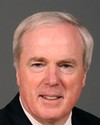Yes, there actually are a lot of precautions built in. That's a very good point.
For example, linear inventory is not provided. You can't see how many kilometres of piping or electrical or any of that information, which is never going to be allowed online. An engineer could apply through a proper process and be fully validated and so on, but that type of information—our utilities information, what's under the pavement—is not exposed on the open data perspective.
There is another type of information that most American cities are starting to think about putting up there and it's called crime data. In fact if you go to New York, you can actually see who is being accused and all kinds of stuff. From a privacy perspective, that is something we have worked through, and our civic engagement group has worked with the police. That's just not doable, and it's something that, from a Canadian perspective, is not acceptable.
What we do, though, is create what we call neighbourhood indicators, and they're based on various factors and different characteristics. You can get a reading in a neighbourhood of what's going on there, not just in terms of crime but other elements, economics and so on. It gives you, in a forum with all the information around it, what the experience is and what's happening, but the raw, detailed information that is in the police files and so on stays exactly there.
We've taken a tremendous amount of precautions. Once we were challenged in 2008 to do it, we took a year to prepare and really go through the details with our clerks, with our civic engagement, talking with the police, the community people, and so on, to really prepare and understand how we could do this. We also looked at examples that were out there.
Most information that's open is GIS information or maps, and that's because people want to know where something is. But it's also the easiest information to get out there. That's why you see the explosion on Google Maps and so on. But that only goes so far. People want to know what the characteristics are and what's really going on in their neighbourhood, and that's where these neighbourhood wellness indicators and other elements are helpful.
But they don't disclose public safety issues. On H1N1, all of the clinic information was up there, but obviously the health results and what was going on wasn't. So we work with our chief medical officer and all the different divisions and agencies to make sure, and they are the ones who pull the switch. They do the quality checklists. They're the ones who release the data. They get advice from clerks. They get advice from the information professionals. They talk to IT on the technical aspects, but they're the ones who say, “That data is ready to go.”
That's why, through that very detailed and ongoing consultation, what is up there is right and it has the proper metadata, and we know it's serving the public in all the possible ways, along with making the government itself more transparent, but in a proper way, in a way that is fulfilling our obligation to the citizens.





